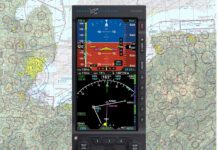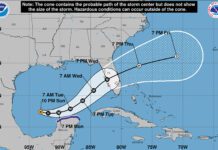For the most part, airplanes and helicopters aren’t environmentally friendly. They consume lots of petroleum and they distribute greenhouse gases throughout the planet, including otherwise inaccessible locations. They remain the best solution for many transportation challenges, however, and emerging technologies like electric powerplants and the same kind of noise-reduction incorporated into modern headsets hold promise for a greener aviation industry. While it’s not likely we’ll be replacing the engines in our airplanes with motors and the fuel tanks with batteries any time soon, the day soon will come when at least short-haul operations won’t be powered by dinosaur juice.
The environmental impact of aviation takes many forms, especially around airports. During the preceding century, many local political battles—and a few at the federal level—sought to enact noise-related curfews, re-route constant jet traffic away from noise-sensitive areas and soundproof buildings near large airports to lessen the impact. Over the years, industry and government have responded with noise-abatement procedures and more-efficient engines, leading many observers, including myself, to marvel at how much quieter modern aircraft are than their predecessors.
Despite these responses to the challenge of airport noise, it remains a real problem for many who live near major airports. Smaller ones, too. Airports you and I routinely use have pattern procedures and calm-wind runway preferences developed to minimize the noise impact on nearby residents (and particularly outspoken local activists). The “Fly Friendly” maxim has penetrated even my thick skull and I always try to do my part, consistent with safe operations. You should, too.
Still, many airports throughout the U.S. remain enmeshed in battles over noise. Santa Monica, California, comes to mind, and any wholesale changes to airspace around major airports that are proposed almost guarantee lengthy and costly environmental studies. Recently, federal legislation proposed by U.S. Rep. Joe Neguse, H.R. 5423, the Aircraft Noise Reduction Act, has come under fire by aviation’s alphabet soup. For good reason. The bill would grant to local airports the authority to “restrict the number and type of aircraft operations for compensation or hire occurring at the airport, including flights originating or landing at the airport, and the dates and times of such operations” for the purpose of implementing noise limitations. This is a really bad idea.
When Congress and the federal government set about to create a national framework of airports, airways and air traffic control, one of its masterstrokes was preempting local regulation of flight operations. Basically, if it’s an FAA-approved operation, it’s probably approved at any public airport. The facility’s operators can’t implement local restrictions banning certain types of operations. Under federal aviation law, doing so is discriminatory and a violation. Yes, curfews and noise-related restrictions exist, but they apply to all operations equally. Rep. Neguse’s bill would upend that level playing field and remove longstanding anti-discrimination restrictions.
In a December 20, 2019, letter to leaders of the committee with jurisdiction, nine aviation associations comprising a broad spectrum of the industry pointed out that legislation enacted in 1990 “resulted in tremendous noise reduction, with the number of people exposed to significant levels of aircraft noise in the United States dropping by 94 percent since the late 1970s, even as enplanements more than quadrupled.”

The letter also noted H.R. 5423 would undercut reliever airports, shifting “operations to commercial airports, many of which are already capacity constrained” and “cause a cascade of delays and other impacts throughout” the National Airspace System (NAS). A final point the association made in their letter is this: “Uniform federal authority is an essential predicate to the safe and efficient administration of the NAS. Any changes to this well-established process will open the door to a tangle of conflicting local regulations, encouraging inefficiencies and jeopardizing safety.”
This is the proper response. As important is the “slippery slope” argument that this kind of loophole in federal law is an invitation for local communities to craft discriminatory restrictions on unfavored operators at federally funded airports. The bill includes a provision exempting any airport from potential penalties for violating FAA airport grant restrictions, just in case.
Just like many of you, I love the sound of a radial engine, or a Merlin mounted to a P-51. I always look up when I hear an airplane, and watch. I’m actually thankful they make noise, so I won’t miss anything. Industry has made great strides in reducing aircraft noise, and more are coming. And as society balances competing interests, we need to ensure that trying to address one problem in one way won’t create many more problems.
Pilots have an obligation to respect the impact of our activities on others—and the planet—and try to minimize it. Fly neighborly and remember that the airport you save may be your own.




